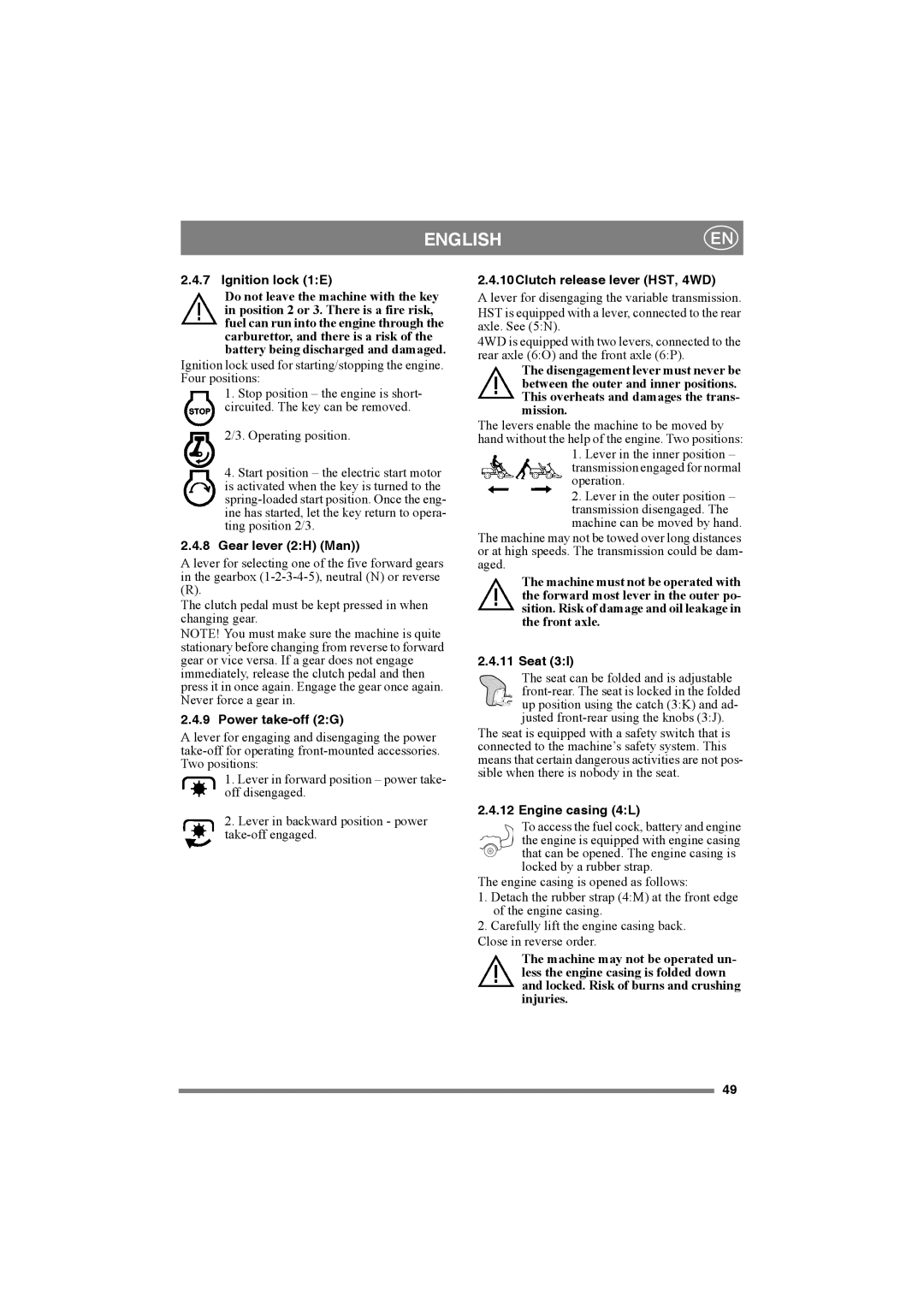
ENGLISH
2.4.7 Ignition lock (1:E)
Do not leave the machine with the key in position 2 or 3. There is a fire risk, fuel can run into the engine through the carburettor, and there is a risk of the battery being discharged and damaged.
Ignition lock used for starting/stopping the engine. Four positions:
1.Stop position – the engine is short- circuited. The key can be removed.
2/3. Operating position.
4.Start position – the electric start motor is activated when the key is turned to the
2.4.8Gear lever (2:H) (Man))
A lever for selecting one of the five forward gears in the gearbox
(R).
The clutch pedal must be kept pressed in when changing gear.
NOTE! You must make sure the machine is quite stationary before changing from reverse to forward gear or vice versa. If a gear does not engage immediately, release the clutch pedal and then press it in once again. Engage the gear once again. Never force a gear in.
2.4.9 Power take-off (2:G)
A lever for engaging and disengaging the power
1.Lever in forward position – power take- off disengaged.
2.Lever in backward position - power
2.4.10Clutch release lever (HST, 4WD)
A lever for disengaging the variable transmission. HST is equipped with a lever, connected to the rear axle. See (5:N).
4WD is equipped with two levers, connected to the rear axle (6:O) and the front axle (6:P).
The disengagement lever must never be between the outer and inner positions. This overheats and damages the trans- mission.
The levers enable the machine to be moved by hand without the help of the engine. Two positions:
1.Lever in the inner position – transmission engaged for normal operation.
2.Lever in the outer position – transmission disengaged. The machine can be moved by hand.
The machine may not be towed over long distances or at high speeds. The transmission could be dam- aged.
The machine must not be operated with the forward most lever in the outer po- sition. Risk of damage and oil leakage in the front axle.
2.4.11 Seat (3:I)
The seat can be folded and is adjustable
The seat is equipped with a safety switch that is connected to the machine’s safety system. This means that certain dangerous activities are not pos- sible when there is nobody in the seat.
2.4.12 Engine casing (4:L)
To access the fuel cock, battery and engine the engine is equipped with engine casing that can be opened. The engine casing is locked by a rubber strap.
The engine casing is opened as follows:
1.Detach the rubber strap (4:M) at the front edge of the engine casing.
2.Carefully lift the engine casing back.
Close in reverse order.
The machine may not be operated un- less the engine casing is folded down and locked. Risk of burns and crushing injuries.
49
